Westminster Abbey: History, power, tourism, and its status as 'the single greatest and most eclectic museum of sculpture in the world'
Westminster Abbey has been at the heart of national life since the Middle Ages. In the second of two articles, John Goodall completes this short survey of the Abbey’s remarkable history; photographs by Will Pryce for the Country Life Picture Library.

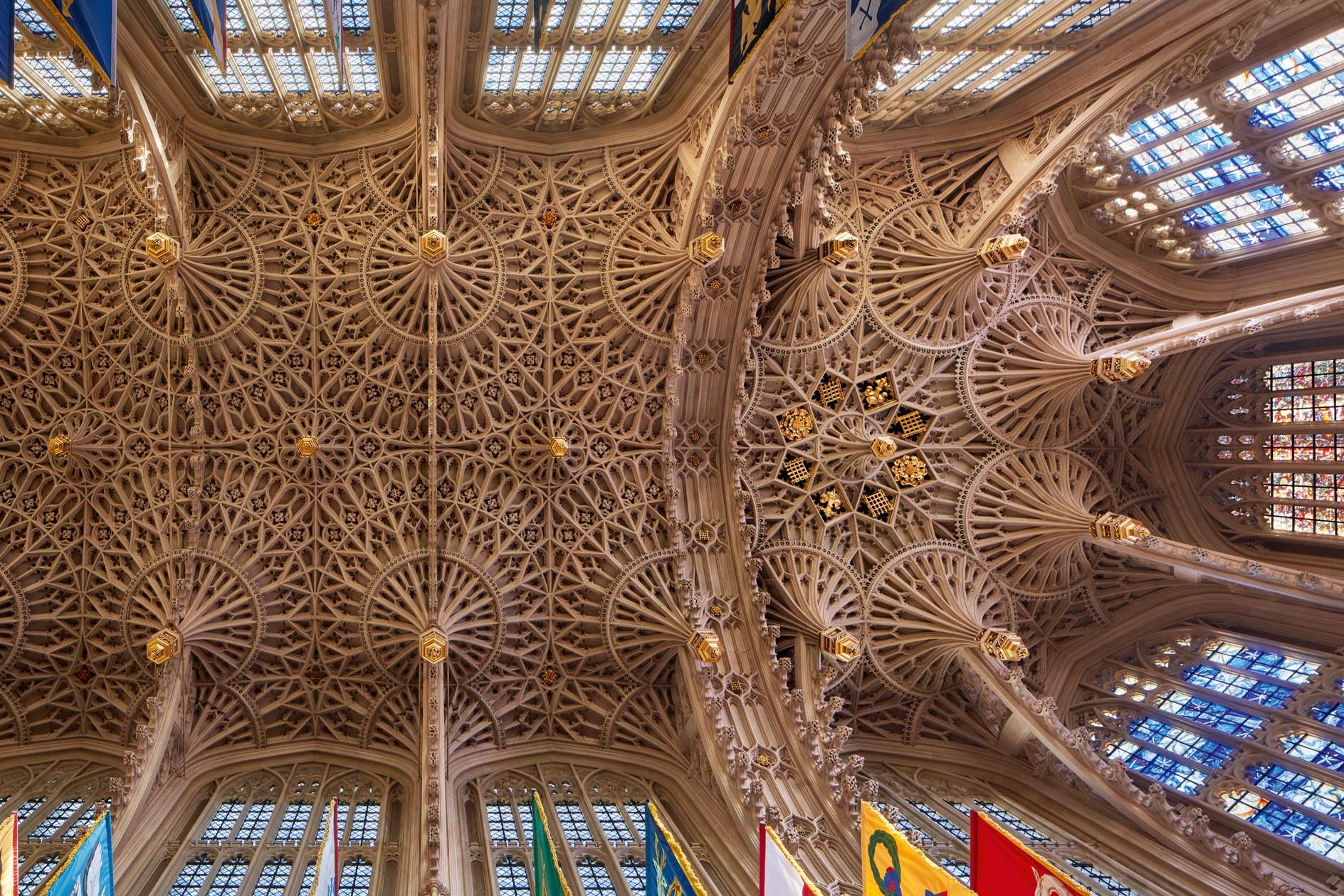
In the early afternoon of June 15, 1381, the 14-year-old Richard II arrived at Westminster Abbey with a large retinue at the height of the Peasants’ Revolt. London had been at the mercy of the mob for two days and the King came to prepare himself to confront the rebels.
Having made offerings and prayers, he rode on to the horse market at Smithfield, just outside the city walls. There, after an angry exchange, the rebel leader, Wat Tyler, was cut down by the Lord Mayor of London and the boy king spurred his horse into the hostile crowd declaring himself the captain of his people and calling for peace. Incredibly, his gamble paid off and the crisis of the uprising passed.
It’s tempting to see in this extraordinary episode some explanation for the intensity of Richard II’s devotion to his ancestor Edward the Confessor, whose shrine commanded the interior of Westminster Abbey. It’s not impossible that the Wilton Diptych, now at the National Gallery, London, was commissioned to ornament the tiny chapel of Our Lady at Pew that opens off the north choir aisle; it was here — according to the account of Jean Froissart — that the boy king offered prayers in 1381. Whatever the case, his devotion was expressed later by such highly idiosyncratic gestures as — from about 1397 — depicting the royal arms of England ‘impaled’ with those of the Confessor, a heraldic convention used to celebrate marriage.
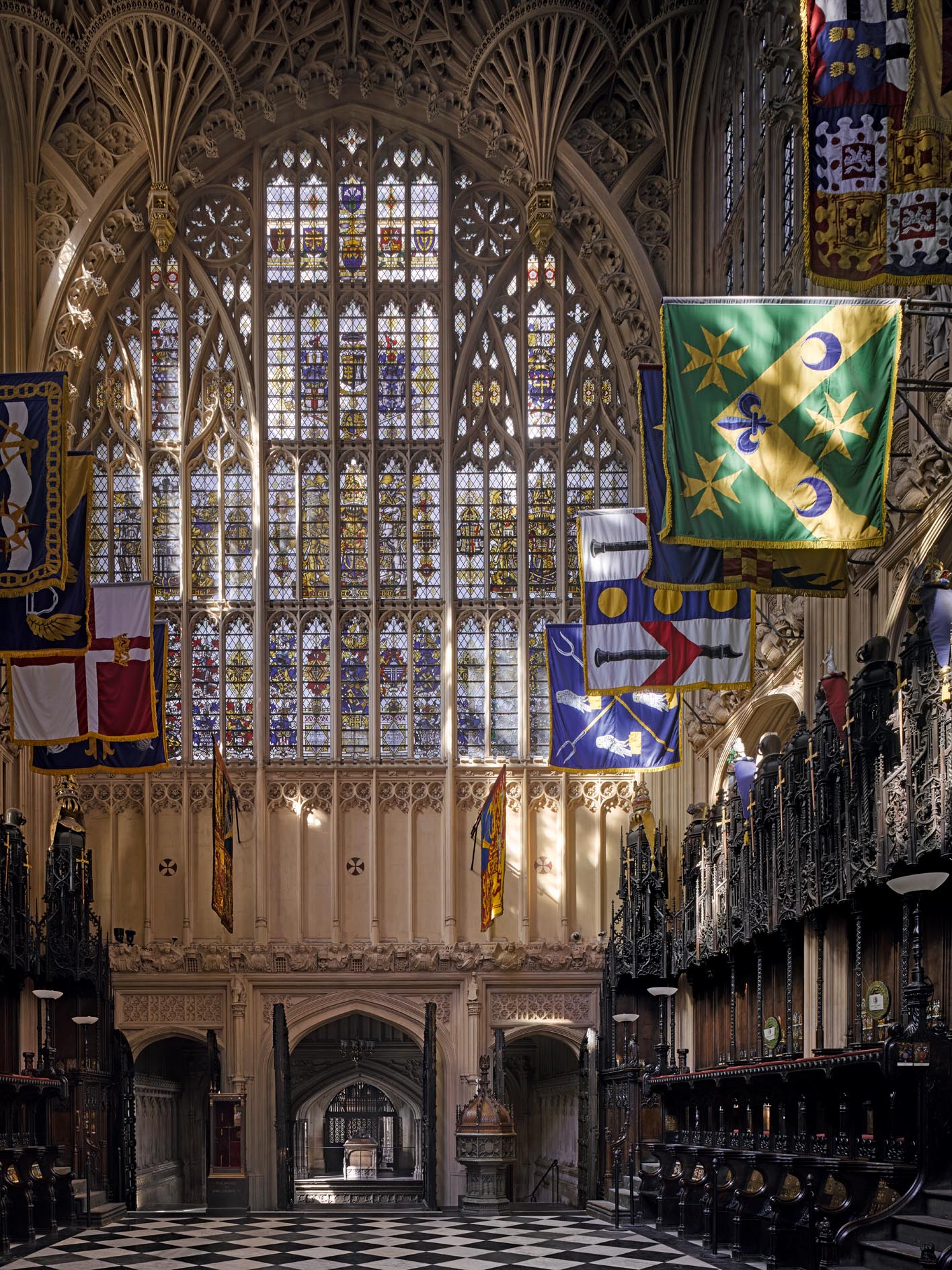
In Richard II, Westminster found a worthy successor to Henry III, whose development of the palace and Abbey was described last week. At the former, he remodelled Westminster Hall with its stupendous surviving roof. He also made many precious offerings to the Abbey and contributed money to replace the Romanesque nave in a manner that — with only minor modifications — matched the style of the 13th-century building.
Richard II’s overthrow by Henry IV in 1399 halted work to the nave, but construction resumed in 1413, following the accession of Henry V. The operation — again interrupted by the King’s death — formed part of a wider attempt to lay the ghost of Henry IV’s usurpation to rest through patronage of this royal church. It also extended to reburying Richard II amid the legitimate line of England’s kings beneath the surviving tomb that stands next to the Confessor’s shrine (Fig 4). As work to the nave continued, the principal access to the church was not from the great west doors, but through the north transept and a porch chapel, now lost.
Henry V likewise desired burial at Westminster and his will, composed in 1420, detailed directions for a chapel on the axis of the church beside the Confessor’s shrine. The process of squeezing this monument into this crowded space — and at the entrance of the Lady Chapel, where his wife, Catherine Valois, was later buried — was bound up with the construction of a new screen or reredos behind the high altar. Significantly, this sumptuous furnishing rendered the shrine itself invisible from the choir for the first time since the 12th century. It illustrates a wider fashion for partitioning up churches in this period.
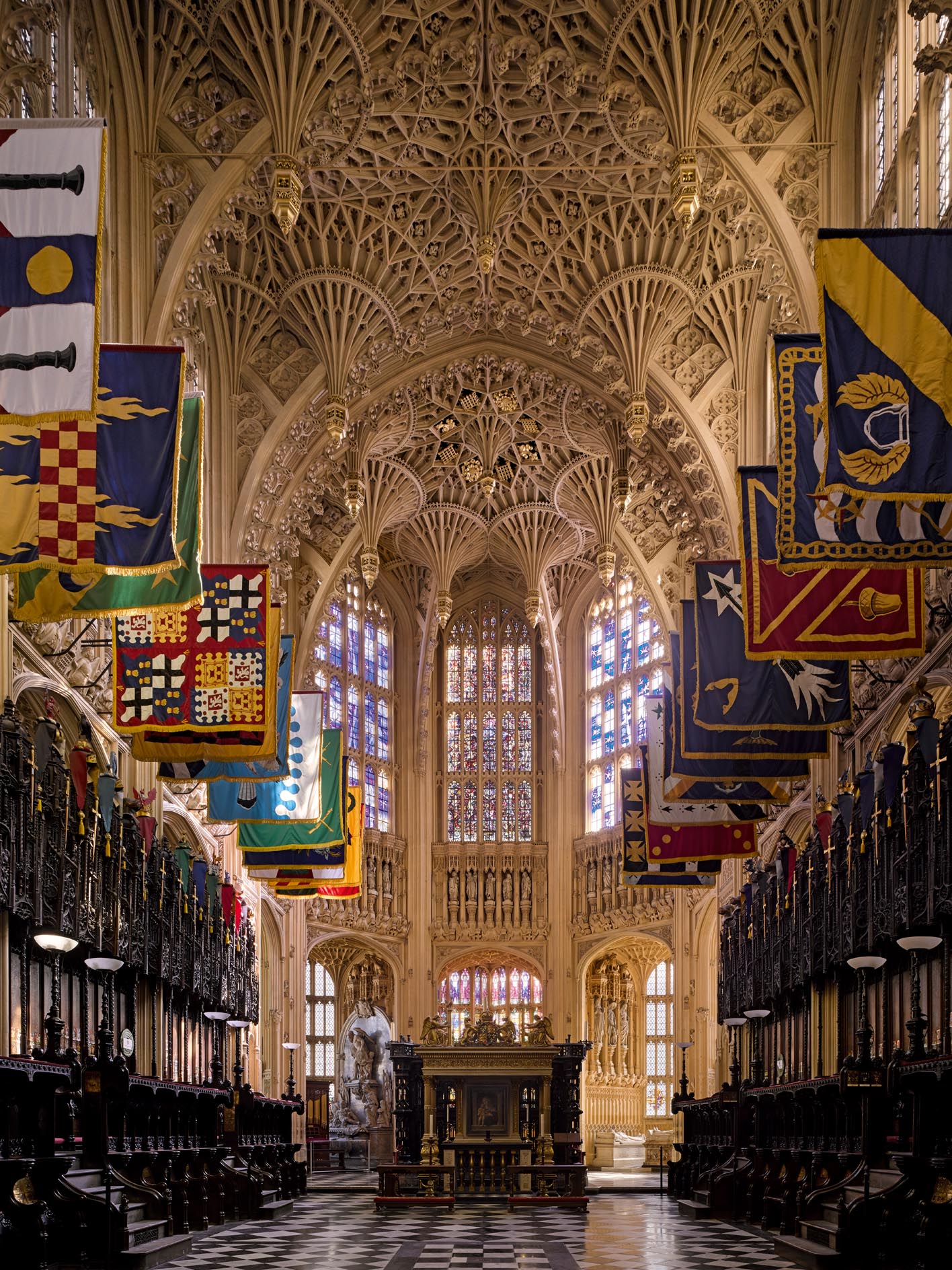
The Wars of the Roses brought about further important changes to the Abbey’s relationship to the Crown. From 1475, the Yorkist king, Edward IV, focused his energies on the reconstruction of St George’s Chapel, Windsor, where he was buried in 1483. The following year, the body of Henry VI, the Lancastrian king he had deposed and probably murdered in 1471, was also brought to Windsor. Henry VI was by now the focus of a devotional cult and this assumed a new importance when Henry VII succeeded to the throne in 1485 as the first Tudor monarch. He was the grandson of Catherine Valois — Henry VI’s mother — by her second marriage. The cult, therefore, bolstered the legitimacy of his claim to the throne and, in 1490, Henry VII petitioned the Pope to canonise his dynastic forebear.
Exquisite houses, the beauty of Nature, and how to get the most from your life, straight to your inbox.
Henry VII initially planned to be buried with Henry VI at Windsor, but, in 1498, he scrutinised the evidence for the saint’s burial wishes afresh and — doubtless encouraged by his mother, Lady Margaret Beaufort — formally determined in favour of translating the body to Westminster Abbey. Rather than erect a monument for Henry VI in the crowded space beside the shrine of the Confessor, however, Henry VII decided to make it the centrepiece of the Lady Chapel, which he proceeded to rebuild in the most opulent fashion from October 1502 (Fig 5). In both liturgical and architectural terms, this building was nothing less than a duplicate of Henry III’s choir, the floor level raised to the same height and the interior furnished with its own shrine, altar, clergy and stalls.
Henry VII’s Chapel, as it is familiarly known today, was probably designed by royal mason Robert Janyns and has consistently commanded admiration. The antiquarian John Leland described it in the 1530s as ‘the wonder of the whole world’ and it’s not hard to see why thanks to its pendant vaults (Fig 1) and dense grids of ornament (Fig 2). It cost about £20,000, an immense sum, and was in the process of being furnished when Henry VII died in 1509. Confusingly, however, Henry VI’s body was never translated here, so it is the tomb of Henry VII and his wife, Elizabeth of York, that occupies the spot intended for Henry VI (Fig 3).
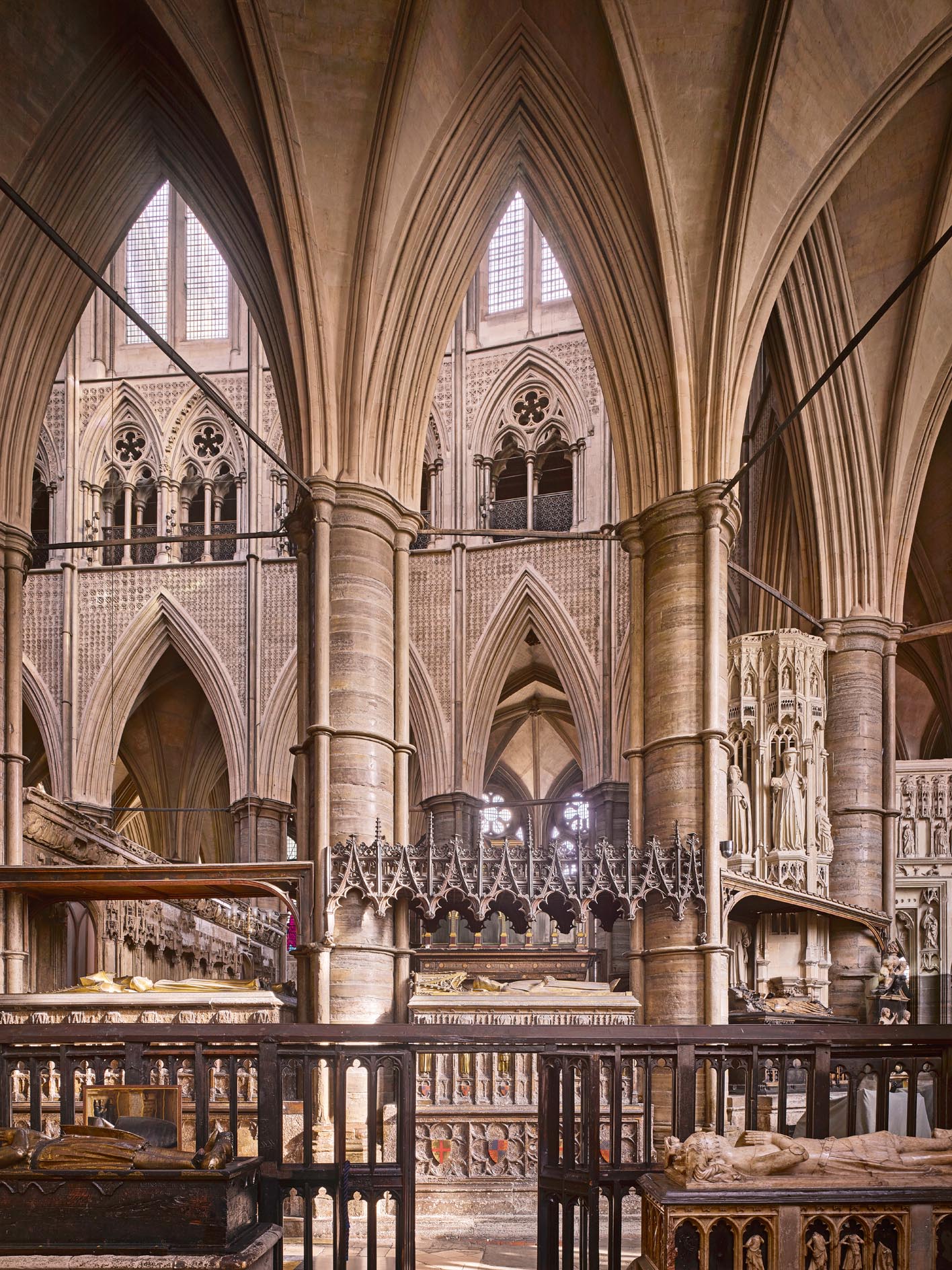
The body of Catherine Valois, meanwhile, exhumed from the old chapel for reburial in the new, was abandoned. Until the 1770s, it lay in a coffin and was shown to favoured or paying visitors. One such was the diarist Samuel Pepys, who records taking the corpse in his arms and kissing the Queen on the lips for his 36th birthday in 1669.
The abbot responsible for the oversight of Henry VII’s work, John Islip, made further important additions to the building, completing the nave interior and also his own burial chapel, the Jesus Chapel. Images drawn for his obituary roll in 1532 offer a final glimpse of the late-medieval Abbey interior.
By long tradition, the conventual buildings at Westminster Abbey — sometimes the chapter house, but latterly the refectory — served as the meeting chamber of the House of Commons. It was, therefore, within the Abbey precincts that the legislation of the Reformation was discussed and passed into law. The demolition of the refectory in 1544 finally forced the Commons out of the precinct to St Stephen’s Chapel in the Palace of Westminster.
In the meantime, the Abbey changed institutional identity at every stage of the Reformation. By a charter of 1560, however, Elizabeth I established Westminster in its modern form as a collegiate church exempt from the jurisdiction of the regular church hierarchy as a so-called Royal Peculiar. Under the long-lived leadership of Dean Goodman (d. 1601), the college celebrated a Protestant liturgy that was at odds with mainstream worship, but agreeable to the Queen’s conservative taste; rich with ceremonial and a strong tradition of music. These qualities remain strong to the present day; Elizabeth I also refounded Westminster School.
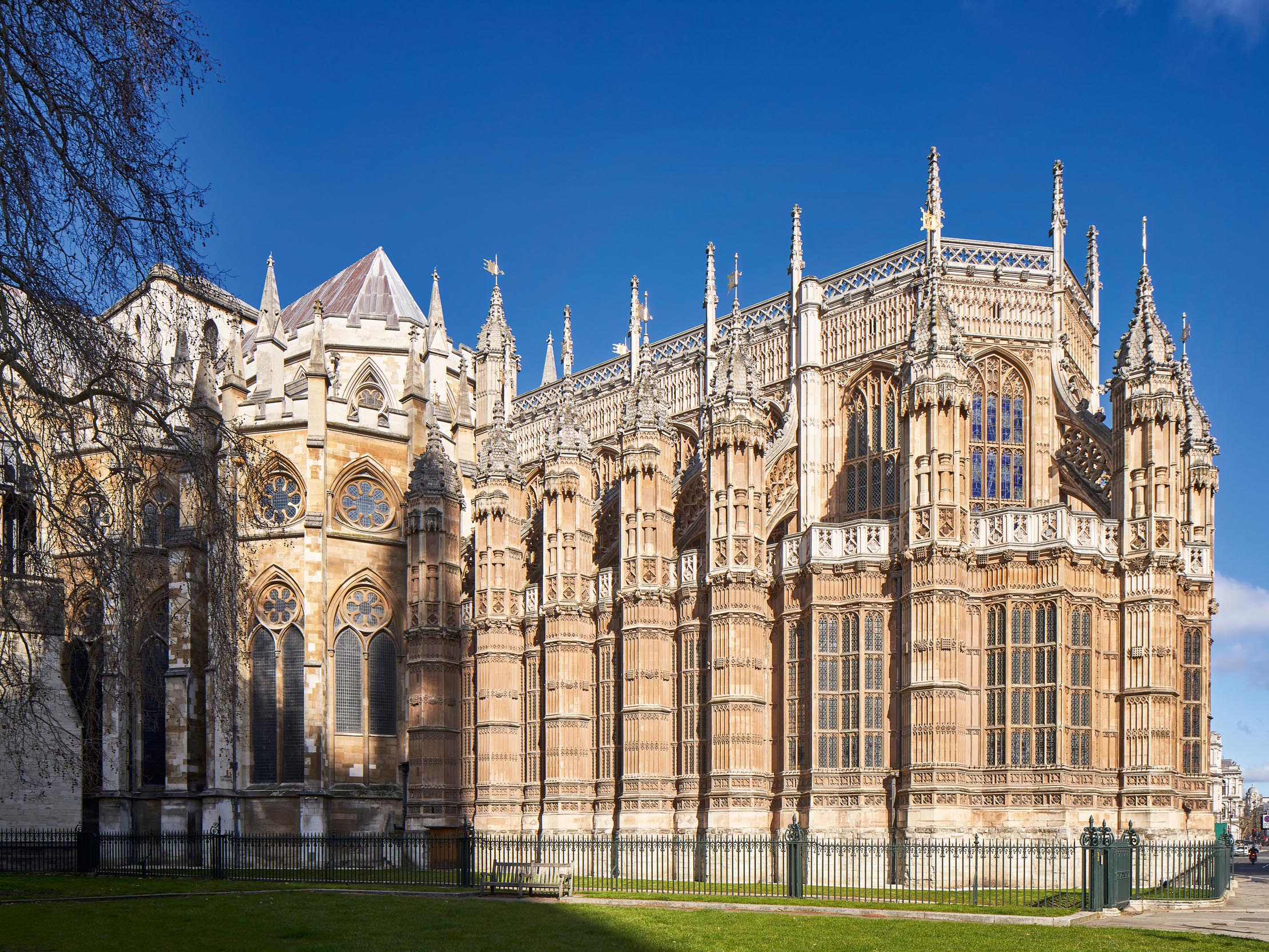
From about 1585, the church began to attract aristocratic burials for the first time in nearly half a century, many of them constructed on an exceptional scale and memorialising women with close personal connections to the Queen. At about this time, penny tours of the monuments became a perquisite of the Abbey verger and, in 1600, the antiquarian and school master of Westminster School, William Camden, published the first guidebook of tombs in the church, a printed recognition of their exceptional interest. One of those described is the posthumous tomb of Geoffrey Chaucer, erected in 1556 in the south transept. The completion in 1599 of a memorial to Edmund Spenser nearby laid the foundations for what is known today as Poets’ Corner.
Following the accession of James I in 1603, the tradition of erecting royal monuments in the Abbey was also revived. Eager to celebrate his Tudor descent, the newly installed King transferred the body of his executed mother, Mary Queen of Scots, from Peterborough to Westminster. Monuments were subsequently commissioned both for her and Elizabeth I in opposite aisles of Henry VII’s Chapel. James I also buried several of his children here, elevating the former Lady Chapel into the burial place of the Stuart dynasty.
After the upheavals of the Civil Wars in the 1640s, by virtue of its close proximity to parliament and ecclesiastical independence, Westminster, in turn, became the church of state for the Commonwealth, with Henry VII’s Chapel again serving as the burial place of several leading figures in the regime, including Oliver Cromwell himself. The Restoration of Charles II in 1660, however, spectacularly returned Westminster to its role as a coronation church. Nor did it hurt the fortunes of the college that, only six years later, in 1666, the Great Fire obliterated the only other church — Old St Paul’s — that might have rivalled its importance in London.
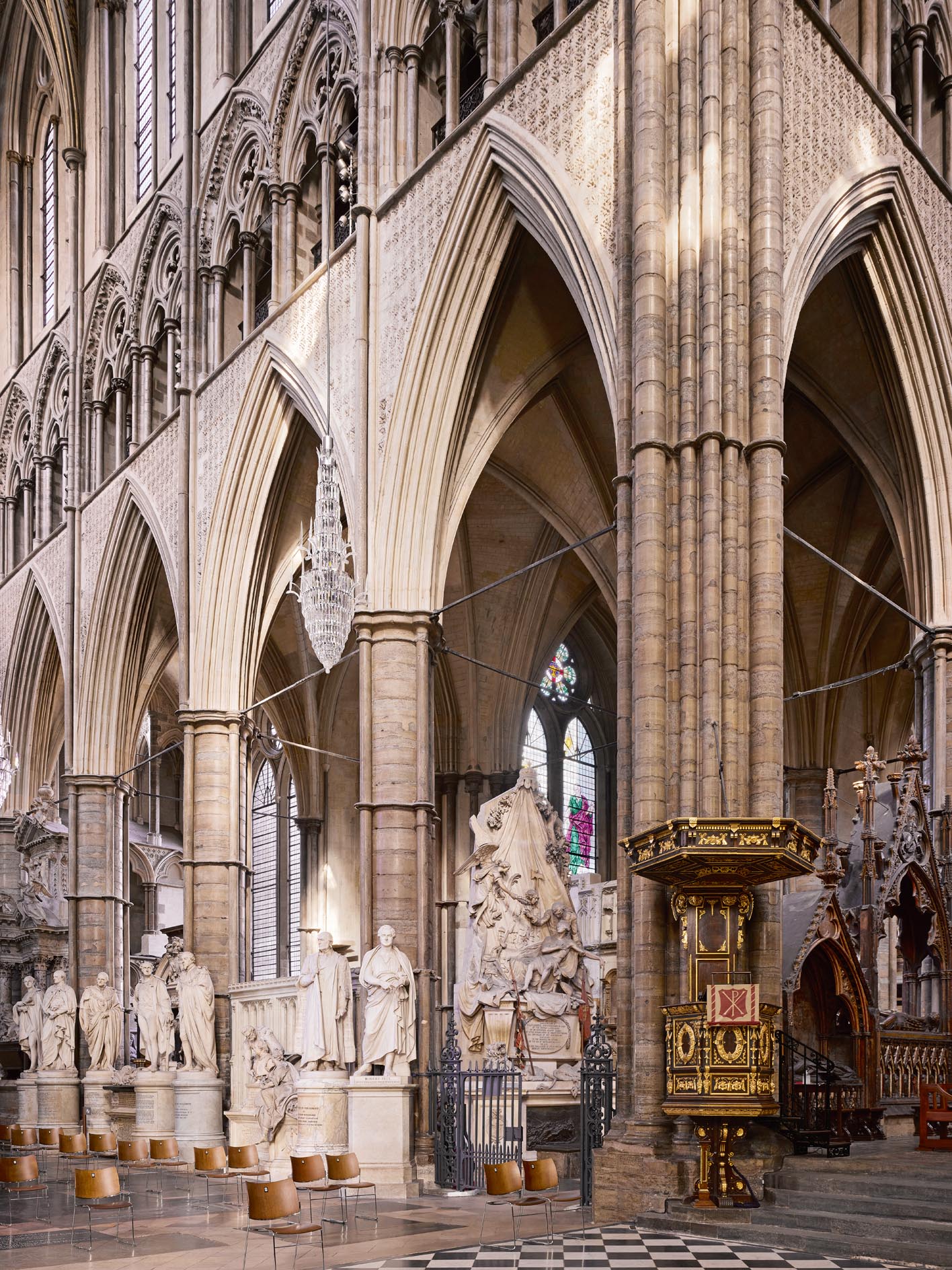
The capital, however, was developing rapidly as a commercial power. By the end of the 17th century, royal power had both diminished and — with the destruction of Whitehall Palace — retreated from the environs of Westminster. The Abbey now began to assume the character of a royal institution in the orbit of Parliament and the Palace of Westminster. It was partly to help Walpole manage his parliamentary majority, for example, that the Order of the Bath was founded in 1725 and based in Henry VII’s Chapel (where it remains).
In return, Parliament voted grants towards the improvement of the Abbey fabric, which enjoyed the status of a national monument symbolic of English history and parliamentary monarchy. These helped clear the streets around the Abbey and also funded the upper stages of the western towers by Hawksmoor in the 1740s that today define the building. Curiously, the bases of these towers encase the remains of their 12th-century predecessors.
Meanwhile, burial within the Abbey interior was opened up to anyone with the money to pay. Very quickly, there came into being monuments to individuals in many fields of national endeavour, including the army, navy, politics and the Arts. During the 19th century, there was a conscious attempt to broaden the spectrum of those memorialised and such initiatives as the grave of the Unknown Warrior further democratised this display.
It’s impossible to do justice to the sheer quantity, quality and interest of the monuments in the Abbey today (Fig 6); they surely constitute the single greatest and most eclectic museum of sculpture in the world. They have been intensively visited since the 18th century and the number continues to grow and diversify.
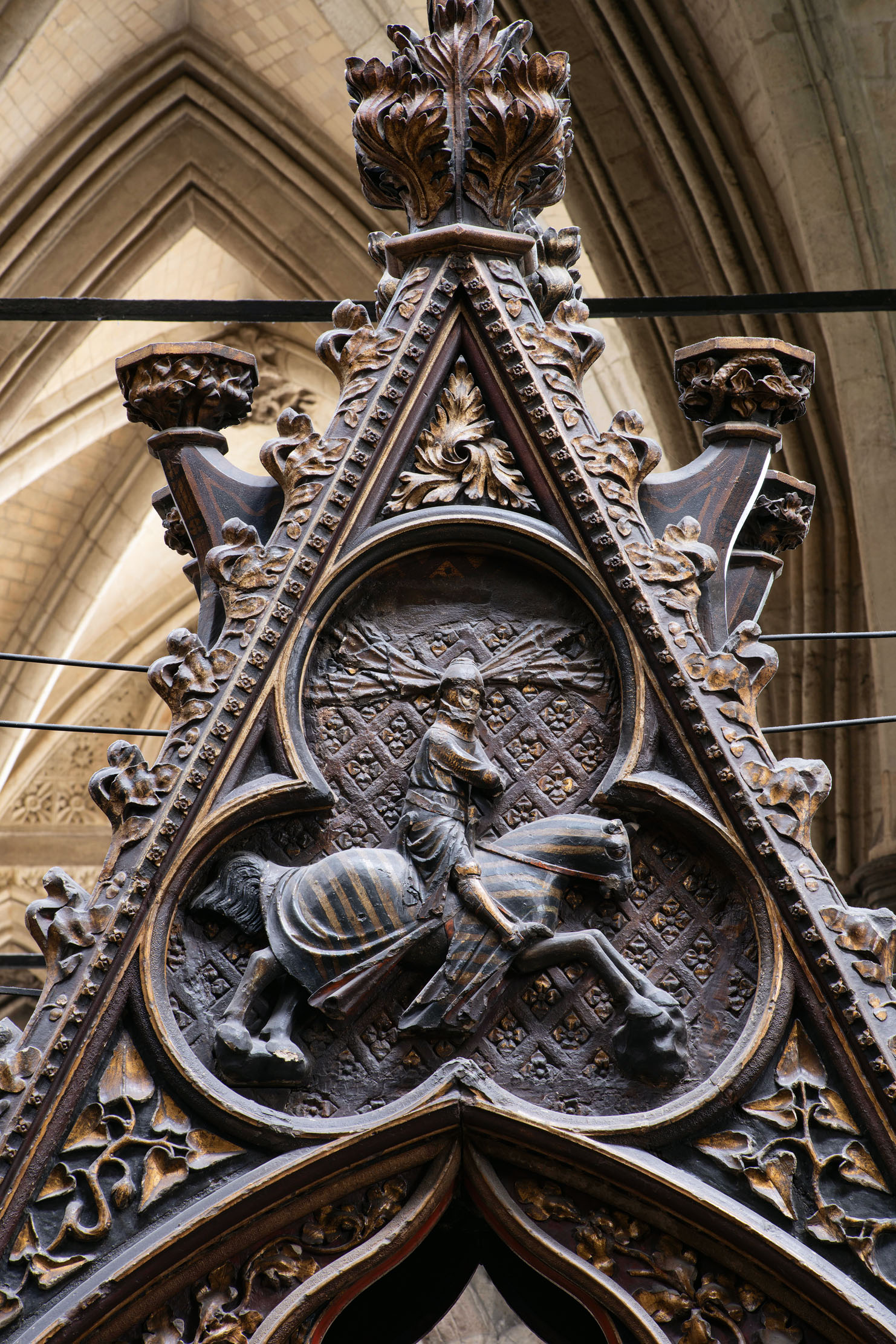
No less remarkable was the way in which the architecture of the Abbey acquired national currency. From the mid 18th century, clearly identifiable details from it appear in fashionable Gothic additions to houses and villas across the country, from Strawberry Hill in Twickenham to Welbeck Abbey in Nottinghamshire. In the 1830s, they also find a place in the designs of Barry’s new Palace of Westminster, notionally instilling the history that had forged Britain’s parliamentary system within the architecture. Such admiration naturally encouraged antiquarian study of the building and the restoration of the Abbey’s medieval fabric. The high point in that process was the late-19th-century renovation work by George Gilbert Scott, but it has continued ever since.
The most important recent addition to the Abbey was the Queen’s Diamond Jubilee Gallery created within the triforium and the Weston Tower that provides access to it by the present Surveyor of the Fabric, Ptolemy Dean (Country Life, July 18, 2018). Shortly before the pandemic, Mr Dean had also turned his attention to the problem of managing the 1.3 million visitors that come to Westminster Abbey each year and improving their experience of what can be an uncomfortably crowded building.
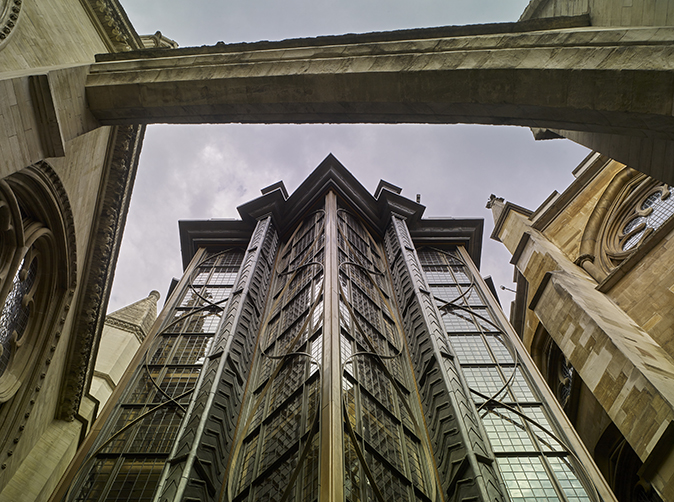
To that end, he has proposed reconstructing the Great Sacristy, a lost 13th-century building to the north side of the nave, a scheme that received planning approval just as the pandemic struck. Because the Abbey’s income derives almost exclusively from tourists, work to the project has been suspended and the preparatory excavations for it temporarily covered over. Money has been raised, however, for the installation of step-free access to the west front.
Westminster Abbey may today depend on tourism, but it remains much more than an attraction. As a church, national monument and a theatre of state, it is a standing reminder at the heart of Government to history and values that we would all — present and future politicians included — do well to remember. It also preserves a degree of institutional independence that permits it to steer its own course in counterpoint to that of the wider church it represents. Such self-determination has allowed the Abbey to adapt itself and survive through revolutions and change that have swept away apparently stronger institutions over the past millennium.
Visit www.westminster-abbey.org
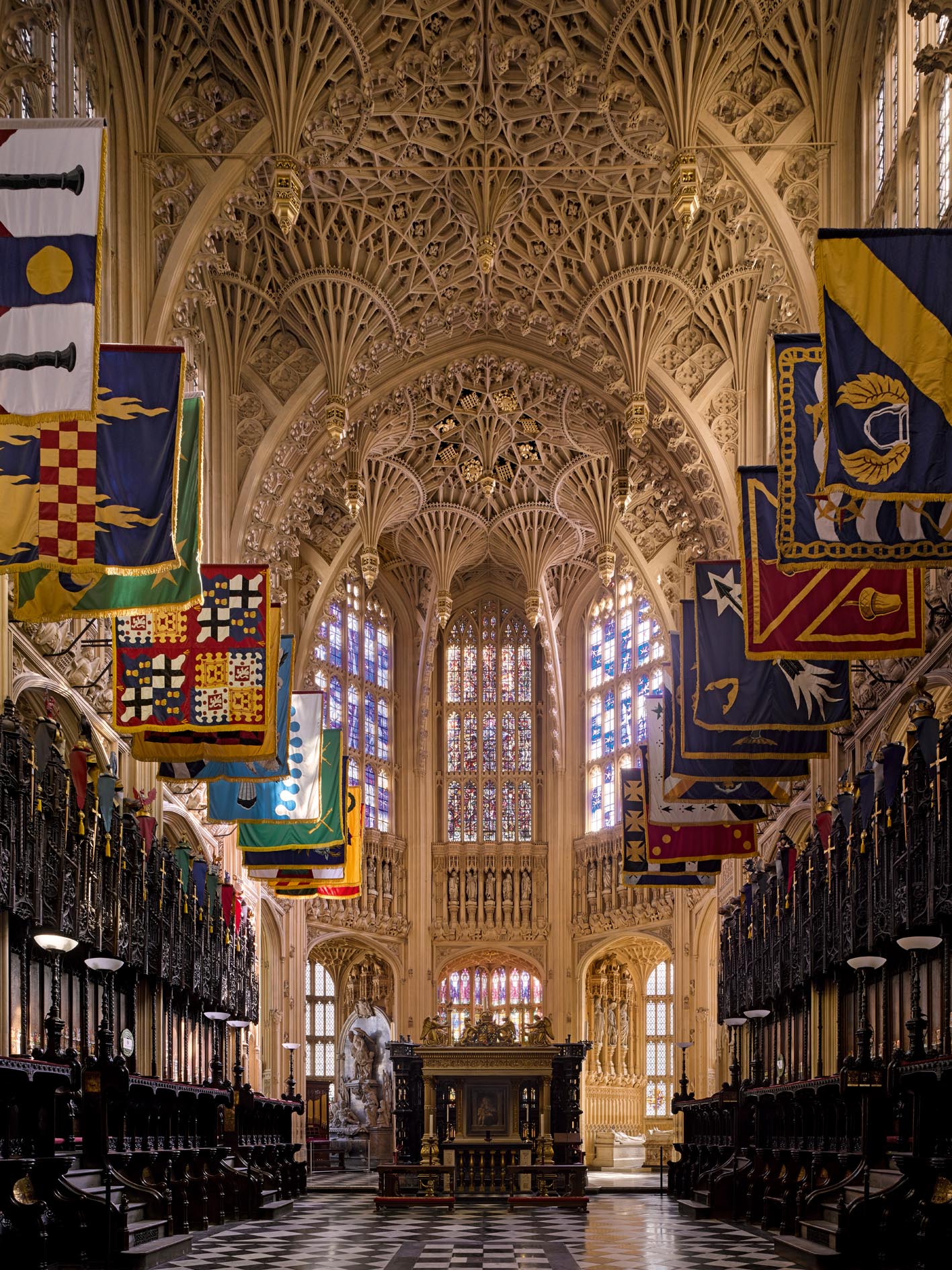
Westminster Abbey: How the nation's coronation church has touched our lives for 1,000 years
In anticipation of The Queen’s Jubilee Year, Country Life had the opportunity to photograph the majestic interiors of Westminster Abbey,

The story of the Queen's Diamond Jubilee Galleries, Westminster Abbey's first major addition in 250 years
The architectural choices behind the recent additions to Westminster Abbey mark them out as a radical departure. John Goodall admires
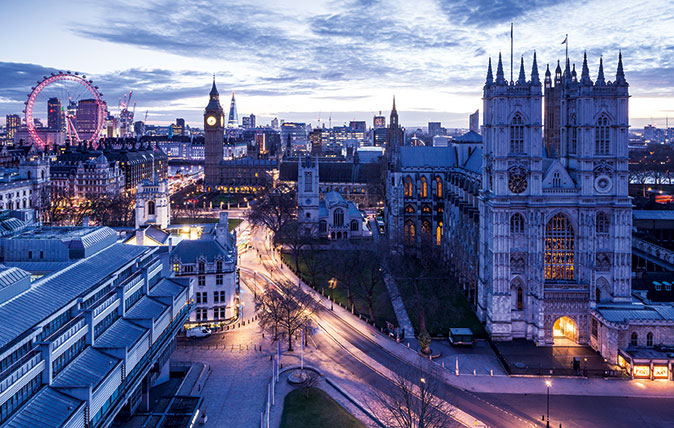
Credit: Getty
Six ways to fix Parliament Square – and make it the centrepiece London deserves

John spent his childhood in Kenya, Germany, India and Yorkshire before joining Country Life in 2007, via the University of Durham. Known for his irrepressible love of castles and the Frozen soundtrack, and a laugh that lights up the lives of those around him, John also moonlights as a walking encyclopedia and is the author of several books.